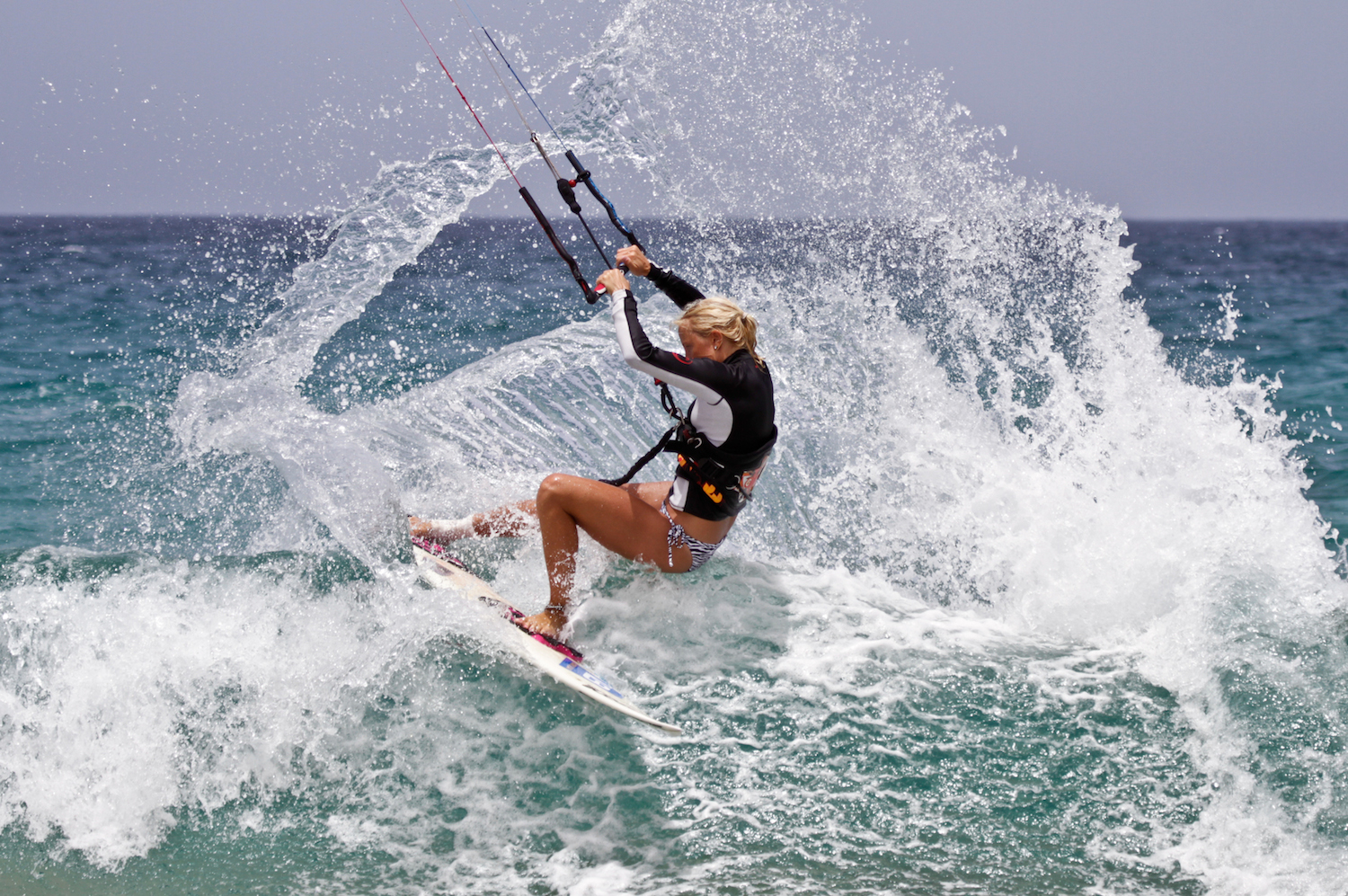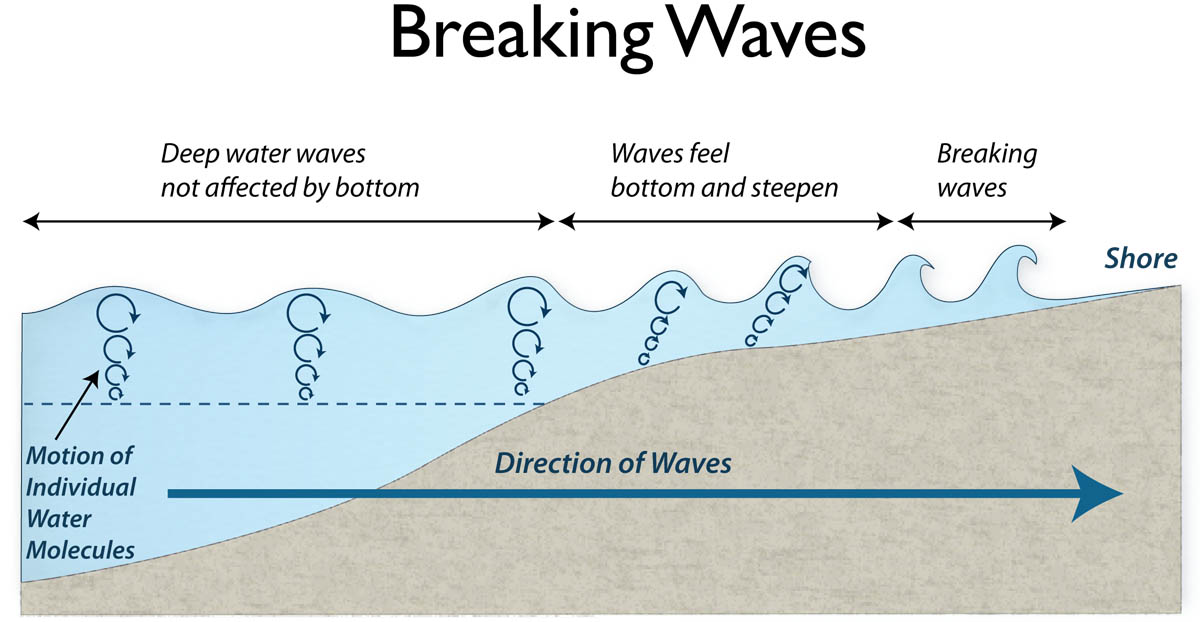
[icegram campaigns=”7743″]
They are formed by the friction generated as wind blows over the surface of the sea, the greater the strength of the wind and the longer it blows over the sea for the greater the energy in the wave and so the greater the size.
Something to clear up straight away is that as long as the wave is not in the process of breaking, the water does not move. Instead think of the water as simply the medium through which the energy (the wave) is transmitted. As we’ll explain in a minute it is only when the wave starts to break that the water itself actually moves.
As waves are formed they tend to be fairly chaotic things, however over long distances the larger waves swallow up the smaller waves, meaning there are fewer, larger waves as they travel further away from their place of birth. This same action also causes waves to separate themselves at fairly regular intervals.
Waves formed in this manner are what we refer to as swell (waves formed and ‘sorted out‘ over many hundreds of kms). This is very different to chop which are the messy type of waves we often experience on windy days at the beach. These waves are formed over a few hundred meters and are characterised by being messy, disorganised and possibly coming from several different directions, often leading to classic bump & jump type conditions for us kitesurfers.
Chop is how all swell originally starts, in that this is how all waves behave when they are initially born. They are still chaotic and haven’t had time or distance to swallow each other and arrange themselves into sets. Given time and distance chop would eventually become swell.
Titanic Syndrome
The captain of the Titanic made a monumental error in failing to appreciate just how far under the water an iceberg extends…the same is true of waves. Waves are not solely experienced at the surface of the water but continue under the water in a circular shape as shown in this diagram.

As the wave reaches the shore and the space underneath it gets less, the bottom of the wave starts to ‘catch’ on the bottom of the ocean floor. When this happens the top of the wave starts to ‘jack up’ in response. As this happens you’ll notice the wave starts to get steeper and “stand up” in a C type shape and then as the ground beneath the wave gets too shallow to support its mass, it crashes over in a froth of white water.
At the point where the wave starts to stand up but before it actually crashes, the potential energy of the wave converts to kinetic energy as the water containing the energy of the wave starts to move. At this point the wave becomes “catchable” by someone on a surf board…ie, you. The surface area of the board is propelled forward on this (now) moving mass of water and tends to cause girly type screams of excitement and impressive wipe outs for anyone fortunate enough to be on said board!

yessss very nice